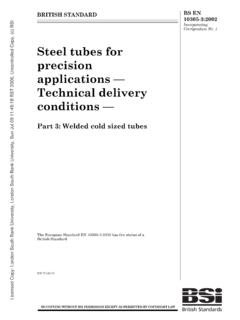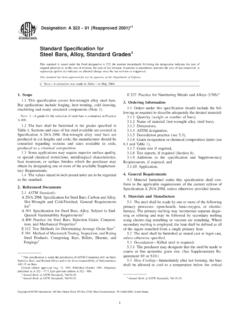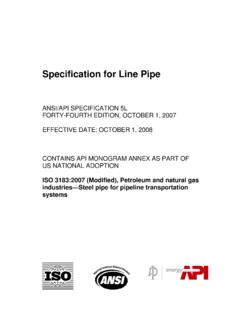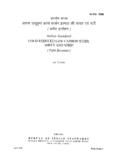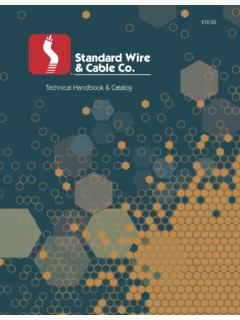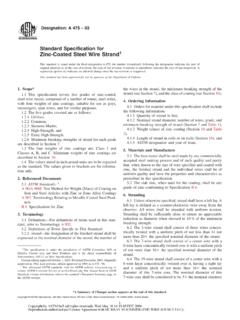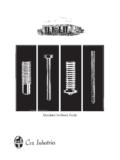Transcription of Standard Specification for Tool Steels Alloy1
1 Designation: A 681 08. Standard Specification for tool Steels Alloy1 . This Standard is issued under the fixed designation A 681; the number immediately following the designation indicates the year of original adoption or, in the case of revision, the year of last revision. A number in parentheses indicates the year of last reapproval. A. superscript epsilon ( ) indicates an editorial change since the last revision or reapproval. This Standard has been approved for use by agencies of the Department of Defense. 1. Scope MIL-STD-163 steel Mill Products, Preparation for Ship- This specification covers the chemical, mechanical, and ment and Storage4.
2 Physical requirements for available wrought alloy tool steel Federal standards : products. Fed. Std. No. 123 Marking and Shipment (Civil Agencies)4. These products, which include hot or cold finished bar, Fed. Std. No. 183 Continuous Identification Marking of plate, sheet, strip, rod, wire, or forgings, are normally fabri- Iron and steel Products4. cated into tools, dies, or fixtures. The selection of a material for Other standards : a particular application will depend upon design, service SAE J1086 Recommended Practice for Numbering Metals conditions, and desired properties. and Alloys (UNS)5. The values stated in inch-pound units are to be regarded 3.
3 Classification as Standard . The values given in parentheses are mathematical conversions to SI units that are provided for information only Material in accordance with this specification is classi- and are not considered Standard . fied by chemical composition. Types correspond to respective AISI designations. 2. Referenced Documents Hot Work tool Steels , Identification H: ASTM standards :2 Types H10 to H19 are characterized by a controlled A 370 Test Methods and Definitions for Mechanical Testing chromium content along with other alloying elements. The first of steel Products four, containing molybdenum, offer excellent toughness and A 561 Practice for Macroetch Testing of tool steel Bars high hardenability and are frequently used in cold work A 600 Specification for tool steel High Speed applications requiring toughness at relatively high hardness A 700 Practices for Packaging, Marking, and Loading levels.
4 Methods for steel Products for Shipment Types H21 to H26 are characterized by a controlled E 3 Guide for Preparation of Metallographic Specimens tungsten content along with other alloying elements. These E 30 Test Methods for Chemical Analysis of steel , Cast Steels offer greater resistance to the softening effect of elevated Iron, Open-Hearth Iron, and Wrought Iron3 service temperatures but exhibit a lower degree of toughness. E 45 Test Methods for Determining the Inclusion Content Types H41 to H43 are low-carbon modifications of of steel molybdenum high speed tool Steels (Note 1) and have charac- E 59 Practice for Sampling steel and Iron for Determination teristics similar to the tungsten types.
5 Of Chemical Composition3 NOTE 1 High-speed tool Steels are covered in Specification A 600. E 527 Practice for Numbering Metals and Alloys in the Cold Work tool Steels , Identification A Types A2 to Unified Numbering System (UNS). A10 cover a wide range of carbon and alloy contents but all Military Standard : have high hardenability and may be hardened in air. The low carbon Types A8 and A9 have less wear resistance but offer 1. This specification is under the jurisdiction of ASTM Committee A01 on steel , greater toughness than others in this group. Type A7, with high Stainless steel and Related Alloys and is the direct responsibility of Subcommittee carbon and vanadium, offers exceptional wear resistance but at on tool Steels .
6 Current edition approved Oct. 1, 2008. Published October 2008. Originally a very low level of toughness. approved in 1973. Last previous edition approved in 2007 as A 681 07 1. 2. For referenced ASTM standards , visit the ASTM website, , or contact ASTM Customer Service at For Annual Book of ASTM. 4. standards volume information, refer to the Standard 's Document Summary page on Available from the Standardization Documents, Order Desk, Bldg. 4, Section the ASTM website. D 700 Robbins Ave. Philadelphia, PA 19111-5094 Attn: NPODS. 3 5. Withdrawn. The last approved version of this historical Standard is referenced Available from the Society of Automotive Engineers, 400 Commonwelth drive, on Warrendale, PA 15096.
7 Copyright ASTM International, 100 Barr Harbor Drive, PO Box C700, West Conshohocken, PA 19428-2959, United States. 1. A 681 08. Cold Work tool Steels , Identification D Types D2 to drilling parallel to the axis of the bar or forging at any point D7 are characterized by high carbon and high chromium midway between the center and surface in accordance with the contents and exhibit high resistance to abrasion. The types latest issue of Practice E 59. The chemical analysis of the containing molybdenum may be hardened in air and offer a drilling chips shall be made in accordance with the latest issue high degree of dimensional stability in heat treatment.
8 Of Test Methods E 30. The chemical composition thus deter- Cold Work tool Steels , Identification O Types O1 to mined shall not vary from the limits specified in Table 1. O7 are low-alloy types that must be hardened by quenching in oil. Sizes over about 2 in. (50 mm) in cross section usually 7. Hardness Requirements Hardness Requirements exhibit lower interior hardness. Annealed hardness values shall be obtained in accor- Shock-Resisting Steels , Identification S Types S1 to dance with the latest issue of Test Methods and Definitions S7 vary in alloy content but are intended for shock-resisting A 370, and shall not exceed the Brinell hardness values (or applications.)
9 Equivalent Rockwell hardness values) specified in Table 2. Special-Purpose tool Steels , Identification L Types Specimens for determination of minimum response to L2 to L6 are low-alloy Steels with a wide range of carbon hardening shall be 1 4-in. ( ) thick disks cut so as to content. The low-carbon types are generally used for structural represent either the full cross-sectional area or that midway applications requiring good levels of toughness, while the between the center and outer surface of the material. If the high-carbon types may be used for short-run tools. material form or size does not lend itself to accurate hardness Special-Purpose tool Steels , Identification F Types determination on 1 4-in.
10 Thick cross-sectional disks, then longi- F1 to F2 are high-carbon Steels with varying tungsten content tudinal specimens may be used for hardness testing. Examples used primarily for relatively short-run fine edge cutting tools. are round bars less than 1 2 in. ( mm) in diameter or sheet. Mold Steels , Identification P: In this case, the specimen shall be a minimum of 3 in. (76 mm). Types P2 to P6 are very low-carbon Steels and must in length and parallel flats shall be ground on the original mill be carburized after machining or hubbing. surfaces. The specimens shall be heat treated as prescribed in Types P20 and P21 are usually supplied in the Table 3.
